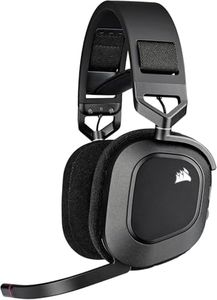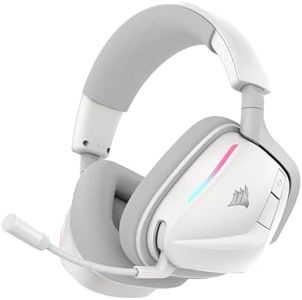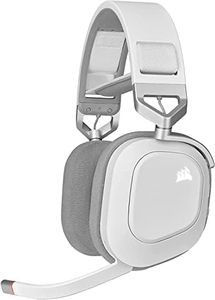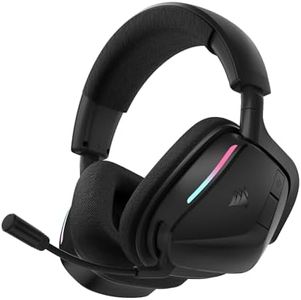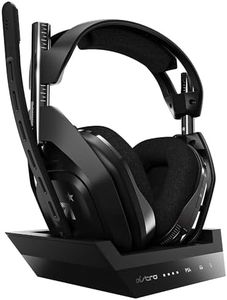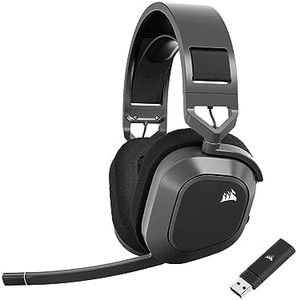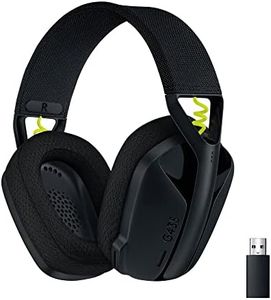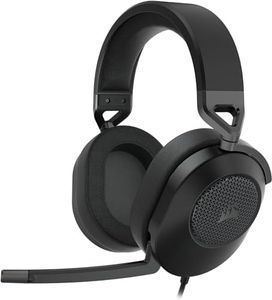We Use CookiesWe use cookies to enhance the security, performance,
functionality and for analytical and promotional activities. By continuing to browse this site you
are agreeing to our privacy policy
10 Best Dolby Atmos Gaming Headset
From leading brands and best sellers available on the web.Buying Guide for the Best Dolby Atmos Gaming Headset
Choosing a Dolby Atmos gaming headset can greatly improve your overall gaming experience by providing immersive, directional sound that helps you stay aware of your surroundings and enjoy game audio as developers intended. To find the best fit for your needs, it's important to look beyond branding and focus on key specifications that will ensure comfort, compatibility, and audio quality tailored to how, where, and what you play.Audio DriversAudio drivers are the tiny speakers inside each ear cup that create the sound you hear. The size and quality of these drivers affect clarity, bass, and overall audio detail. Gaming headsets often come with drivers ranging from about 40mm to 50mm. Larger drivers can offer deeper bass and a wider soundstage, which can make games sound more immersive, but that's only true if they are well-designed. If you play competitive shooters, you may want precise, clear drivers to hear footsteps and key effects; if you enjoy story-rich or cinematic games, bigger drivers with good bass response may enhance atmosphere.
Surround Sound and Dolby Atmos SupportDolby Atmos is a surround sound technology that creates a 3D audio effect, allowing you to perceive sound coming from above, below, and all around. Not every gaming headset labeled 'Dolby Atmos' offers the same experience — some rely on hardware, others use software. A headset that is fully Atmos-enabled will often include a code or built-in support via your gaming platform. If you want true spatial audio for maximum immersion in compatible games, make sure the headset provides actual Dolby Atmos support, not just virtual 7.1 or stereo surround.
Microphone QualityA microphone lets you communicate with other gamers. Mic quality is crucial if you play a lot of team-based or online games. Look for specs or reviews mentioning noise cancellation or clarity. Removable or flip-to-mute mics offer flexibility. If you're streaming or spend a lot of time chatting, prioritize a headset with good microphone quality; if you're mostly a solo player, this spec may be less important.
Comfort and BuildComfort matters for long gaming sessions. Key aspects include adjustable headbands, memory-foam ear cushions, and overall weight. Some users prefer lighter headsets or velour-type cushions for cooler wear, while others focus on durability for frequent travel or heavy use. To choose, think about how long you usually wear headphones and if you wear glasses—some designs work better with eyewear.
Connectivity (Wired vs Wireless)Headsets can be wired, wireless (using a USB dongle or Bluetooth), or both. Wired connections usually offer zero lag and don’t require charging, making them ideal for uninterrupted play. Wireless headsets offer more freedom of movement, which is great if you dislike cords. Consider whether you move around a lot while gaming or need a headset that can work with multiple devices when picking your connectivity type.
Platform CompatibilityNot all headsets work with every gaming device in the same way. Some are built for PC, while others are compatible with Xbox, PlayStation, or mobile devices. Atmos support may also differ by platform—sometimes requiring an app or download. Make sure the headset you choose is fully compatible with your primary gaming system and check if any additional software or setup is needed for Dolby Atmos.
